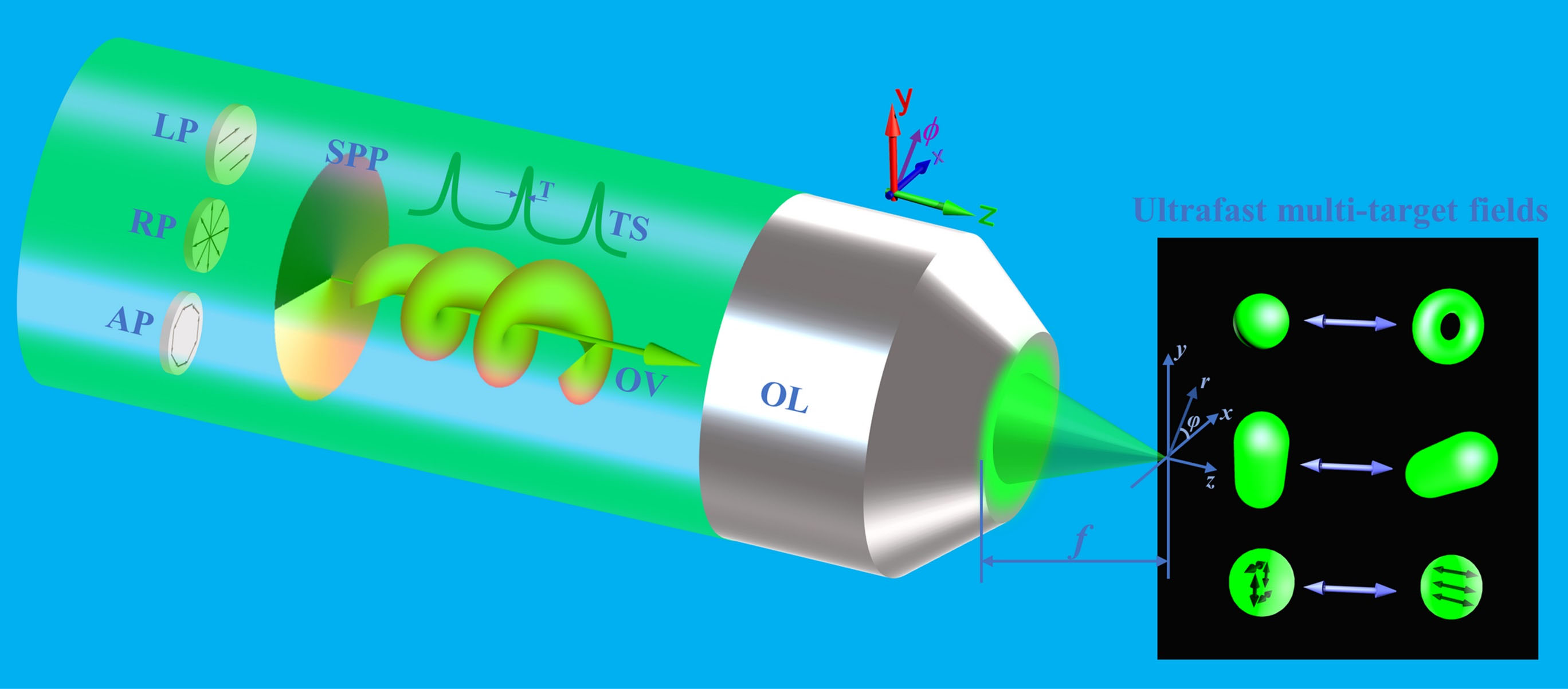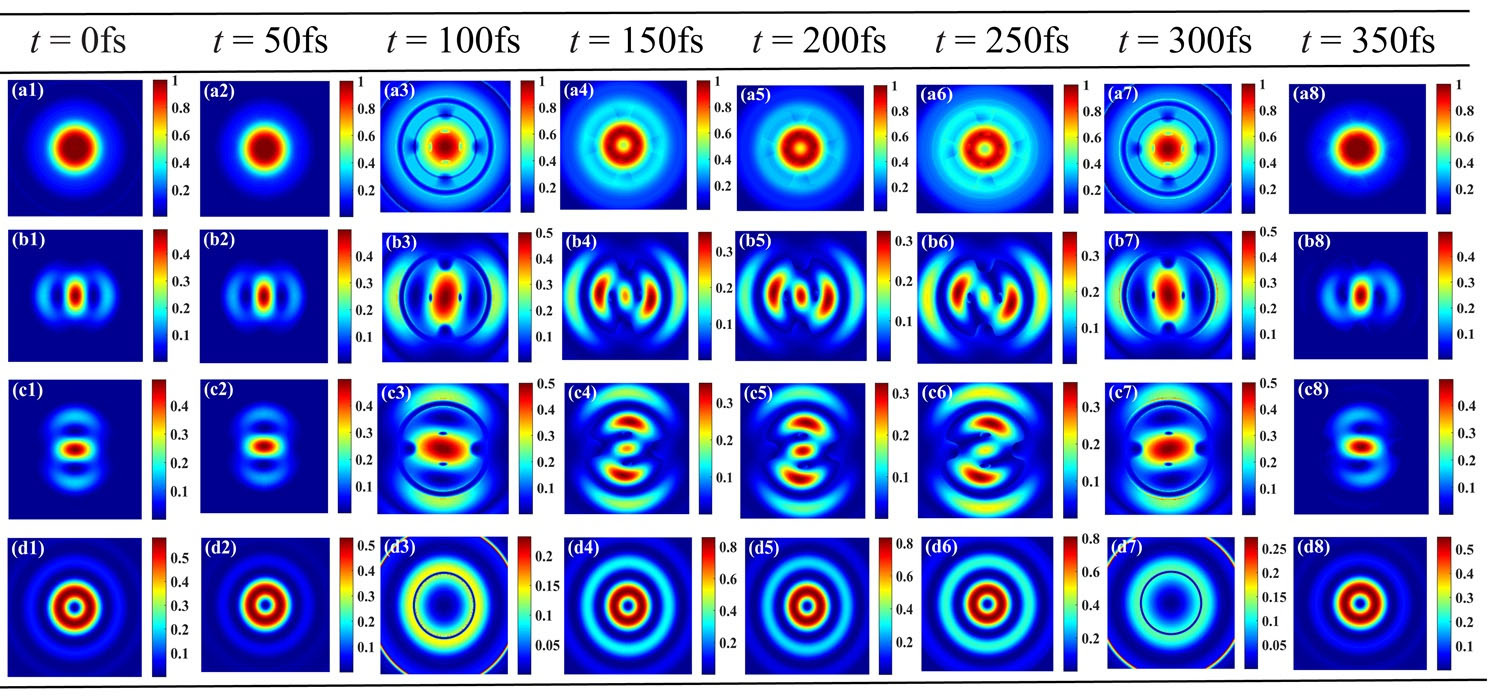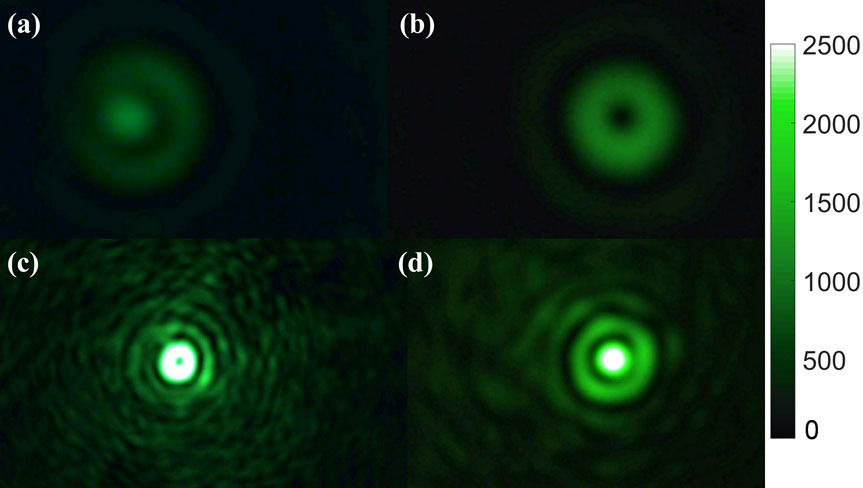| Apr 04, 2022 |
Ultrafast multi-target control of tightly focused light fields
(Nanowerk News) Space-time shaping of ultrafast pulse laser is considered as a powerful tool for the development of high-efficiency laser trapping, ultrafast optical spanner, precise time-resolution measurement, ultrafast spectroscopy, integrated optical chip and high-resolution imaging.
|
|
In this regard, numerous research efforts have been devoted to achieve the specific spatial modulation and temporal encoding of light fields. These works, however, focus primarily on the single-functional space-time shaping of light fields and fully overlook the variation details of light fields within an ultrashort time regime.
|
|
Thus, how to realize the ultrafast multi-target control of light fields by combining the vector-vortex (spatial) traits with the ultrafast time (temporal) variations remains to be elusive until now, which hinders not only instructive insights into the ultrafast light-matter interactions but also the applications in the novel optical tweezer settings.
|
 |
| Fig. 1 The conceptual schematic to yield ultrafast multi-target light fields in a single high numerical aperture objective lens focusing configuration. (© Opto-Electronic Advances)
|
|
Researchers led by Professor Baohua Jia at Swinburne University of Technology, Australia, and Dr. Zhongquan Nie at Taiyuan University of Technology, presented a new concept for realizing ultrafast modulation of multi-target focal fields based on the facile combination of the time-dependent vectorial diffraction theory with the fast Fourier transform (Opto-Electronic Advances, "Ultrafast multi-target control of tightly focused light fields").
|
|
It is achieved by tightly focusing radially polarized femtosecond pulse vortex laser beams in a single objective lens geometry, as shown in Fig. 1. It is uncovered that the ultrafast temporal degree of freedom within a configurable temporal duration (~400 fs) plays a pivotal role in determining the rich and exotic features of the focused light field at one time, namely, bright-dark alternation, periodic rotation, and longitudinal/transverse polarization conversion.
|
|
The underlying control mechanisms have been in turn unveiled by the creation of zero or π phase variation, time-dependent Gouy phase shift, and energy flux redistribution, as showcased in Fig. 2.
|
 |
| Fig. 2 The focused field distributions of radially polarized light with first-order vortex at different temporal intervals. (© Opto-Electronic Advances)
|
|
Additionally, the initially experimental results demonstrated by this work are well in agreement with their proposed theoretical predictions and numerical analyses, as demonstrated in Fig. 3.
|
|
The advantages of this work lie in not only enabling high-efficiency operation and low-complexity design of optical setup, but allow increasing the controllable temporal degree of freedom into the practical optical tweezer strategies compared with that of traditional approaches.
|
 |
| Fig. 3 The tightly focused light fields of (a) radially polarized beam; (b) azimuthally polarized beams; (c) radially polarized beam with 1-order vortex phase; (d) azimuthally polarized beams with 1-order vortex phase. (© Opto-Electronic Advances)
|
|
More importantly, the routes presented is capable to simultaneously achieve multiple and controllable targets of light fields in a single geometry configuration. Besides being of academic interest in diverse ultrafast spectral regimes, these peculiar behaviors of the space-time evolutionary beams promise to underpin prolific ultrafast-related applications such as multifunctional integrated optical chip, high-efficiency laser trapping, microstructure rotation, super-resolution optical microscopy, precise optical measurement, and liveness tracking.
|



